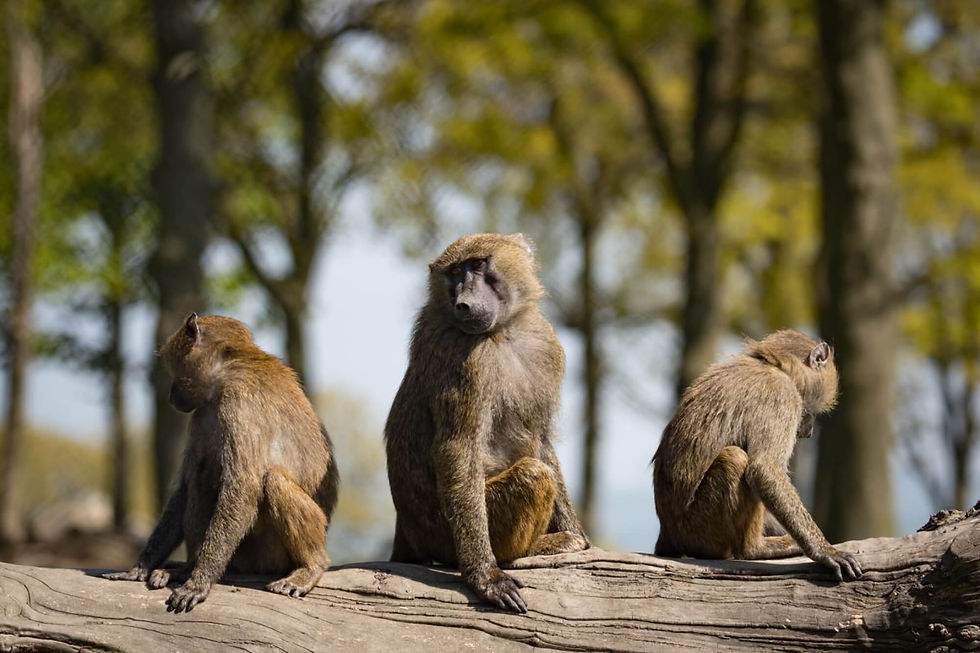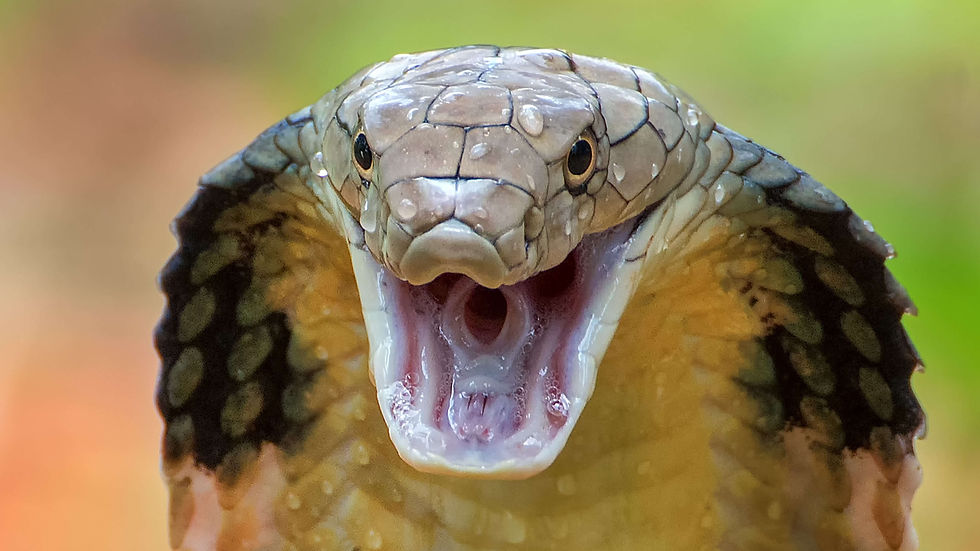Most Dangerous Animals to Encounter on an African Safari in Uganda
- The blog nomad
- Sep 24, 2024
- 4 min read
Uganda is one of Africa’s top safari destinations, attracting millions of travelers eager to witness its diverse wildlife. However, while safaris offer breathtaking experiences, it's essential to recognize that some animals can be dangerous if provoked.

Here are the 8 most dangerous animals you may encounter on a Ugandan safari, and tips on how to stay safe around them.
1. Hippos: Africa’s Most Dangerous Mammal

Despite their calm appearance, hippopotamuses are considered the most dangerous animals on an African safari. Found in Uganda’s rivers and lakes, including the Kazinga Channel in Queen Elizabeth National Park and the Victoria Nile in Murchison Falls National Park, hippos are incredibly aggressive and territorial. They can weigh up to 3,300 pounds and have powerful jaws capable of snapping a boat in half.
To stay safe:
Avoid well-vegetated riverbanks where hippos may be grazing.
Keep a safe distance during boat cruises, especially at dusk and dawn when hippos leave the water to feed on grass.
2. Nile Crocodiles: Stealthy Predators

Nile crocodiles are formidable predators found in Uganda’s water bodies, including Lake Albert, Lake Victoria, and the Kazinga Channel. While crocodiles typically avoid human settlements, they pose a risk to anyone venturing too close to the water’s edge. These reptiles are known for their stealthy ambushes, making them one of the most dangerous animals in Uganda.
To stay safe:
Avoid swimming or wading in rivers or lakes, especially in areas known for crocodile activity.
Stay a few meters away from the shoreline when observing wildlife.
3. Cape Buffalo: The Unexpected Threat

The Cape buffalo is one of the most dangerous members of the Big Five, despite its seemingly calm demeanor. Found in large herds across Uganda’s savannahs, buffaloes are highly unpredictable and can charge without warning, especially when wounded or threatened. Their sheer size and strength make them a force to be reckoned with.
To stay safe:
Avoid approaching buffaloes, particularly old bulls or mothers with calves.
If a buffalo appears agitated, give it plenty of space to avoid provoking a charge.
4. Elephants: Majestic but Unpredictable
As the largest land animals on earth, elephants are both awe-inspiring and dangerous. Uganda is home to two types: savannah elephants, found in Murchison Falls, Queen Elizabeth, and Kidepo Valley National Parks, and forest elephants, found in Bwindi Impenetrable National Park. While generally peaceful, elephants can become aggressive if they feel threatened, especially if surprised.
To stay safe:
Back away slowly if you encounter an elephant at close range.
If an elephant charges, head for the nearest tree or vehicle for safety.
Keep a safe distance and avoid making loud noises that might startle them.
5. Monkeys and Baboons: Small but Aggressive

While smaller than the other animals on this list, monkeys and baboons can still pose a threat, especially when they associate humans with food. Baboons, in particular, can become aggressive if they feel threatened or if food is involved. Incidents of baboons attacking people for food are rare but not unheard of.
To stay safe:
Avoid feeding monkeys or baboons to prevent unwanted attention.
Secure food properly to avoid attracting them, and follow your guide's instructions when near primates.
6. Large Cats: The Silent Stalkers

Uganda is home to lions, leopards, and cheetahs, all of which are capable of attacking humans under certain conditions. However, these big cats generally avoid human encounters. Lions are the most likely to pose a threat if provoked, while cheetahs are less dangerous to adults. Hyenas may also be present and are known for scavenging around campsites.
To stay safe:
Do not run if you encounter a large cat—it may trigger a chase.
Stand your ground and slowly back away if necessary, making noise if the animal appears menacing.
Never sleep in the open when camping in areas known for predators.
7. Snakes: Rare but Dangerous

Uganda is home to several species of venomous snakes, including cobras and vipers. While snakes typically avoid human contact, you may encounter one while walking through the bush or picking up firewood.
To stay safe:
Wear long pants and sturdy boots to protect against snake bites when on guided walks or treks.
Remain aware of your surroundings, especially in areas where snakes are known to hide.
8. Mosquitoes: The Silent Killers

While not as imposing as the other animals on this list, mosquitoes are responsible for transmitting malaria, making them one of the most dangerous non-bipedal creatures in Uganda. Mosquitoes are especially prevalent in low-altitude areas and near bodies of water.
To stay safe:
Use insect repellent and sleep under mosquito nets.
Take anti-malaria medication as prescribed by your doctor before and during your safari.
While Uganda offers some of the most incredible wildlife experiences in Africa, it's important to remain cautious and respectful of the animals in their natural habitats. By following these safety tips and listening to your guide's advice, you can enjoy a thrilling yet safe safari adventure.
